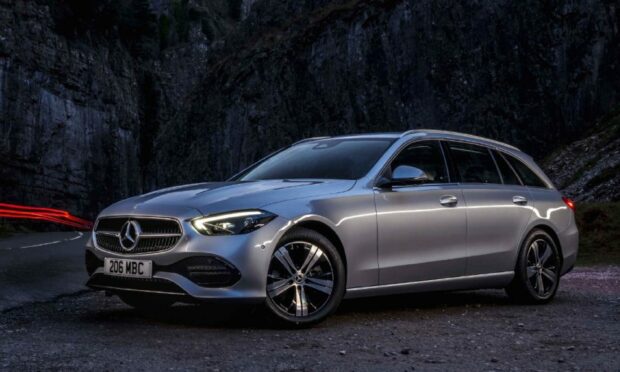The Mercedes-Benz C-Class is one of those cars that makes the world go round.
A mainstay in the German manufacturer’s line-up for decades, it’s one of those solid choices that has, time and time again, made for a perfect fit for so many drivers.
And our test of the saloon version indicated that this was still the case for the brand new version.
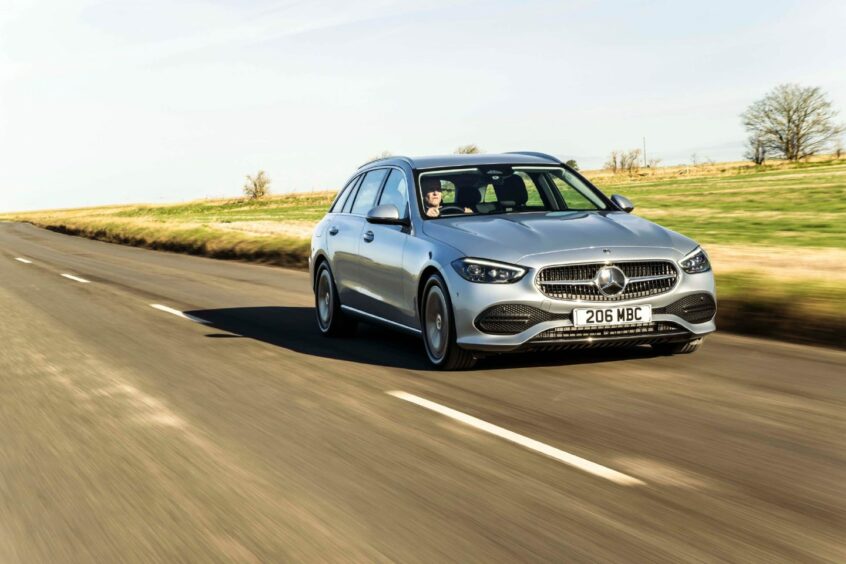
But what if you’re after a little more space and a slightly more versatile boot? That’s where the Estate version comes in.
The basic recipe for the C-Class Estate remains much the same as it always has. Take the standard saloon, add an elongated rear section for a larger boot and – hey presto – you’ve got yourself a more versatile vehicle.
New design offers more space inside

The latest generation C-Class benefits from even cleaner engines than before, as well as an interior that takes many cues from the tip-top S-Class.
The cabin is more spacious than before, with greater levels of head and knee room for those sitting in the rear. Though you can have it in sportier AMG Line specifications too, we’ve got it in entry-level Sport trim – which is bound to be the choice of comfort-conscious drivers.
Under the bonnet
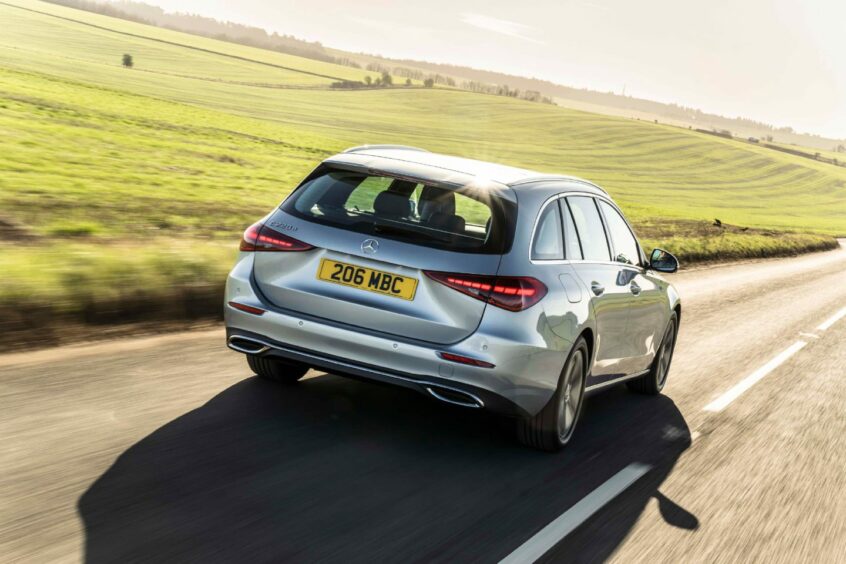
We’re testing the C-Class Estate in ever-popular C220d guise. It’s got a turbocharged 2.0-litre diesel engine with 197bhp and 440Nm of torque, driven to the rear wheels through a nine-speed automatic transmission.
There’s 48-volt mild-hybrid assistance, too, helping to fill in the gaps in torque and allowing the car to ‘sail’ when coasting. The C220d’s efficiency figures are, in fairness, impressive; Mercedes claims up to 60.1mpg combined and we far exceeded that figure during our time with the car.
In terms of emissions, things are just as good, with a very respectable 129g/km CO2 coming from this particular model.
A comfortable drive
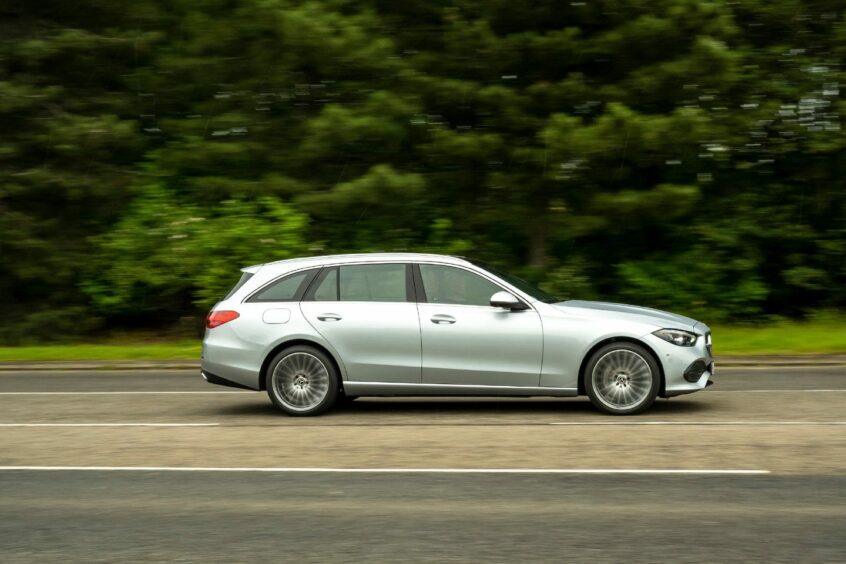
This Sport-specification grade is a breath of fresh air in what is traditionally quite a firmly-sprung segment. The C220d feels infused with the kind of wafty ability that you get in the range-topping S-Class, ironing out road imperfections with ease and coping well with deeper potholes.
You do, of course, lose a bit of body control as a result and crests taken at speed can result in the C220d feeling a little ‘on its toes’, but it feels like a worthwhile trade-off for that comfort.
It’s quiet, too, while the 2.0-litre engine provides more than enough punch and its claimed 0-60mph time of 7.2 seconds feels about right.
It’s not rough, either, dispelling those ideas that four-cylinder diesels are always rattly and coarse. The nine-speed gearbox shifts smoothly, too, with the whole package making motorway journeys a breeze.
Understated looks
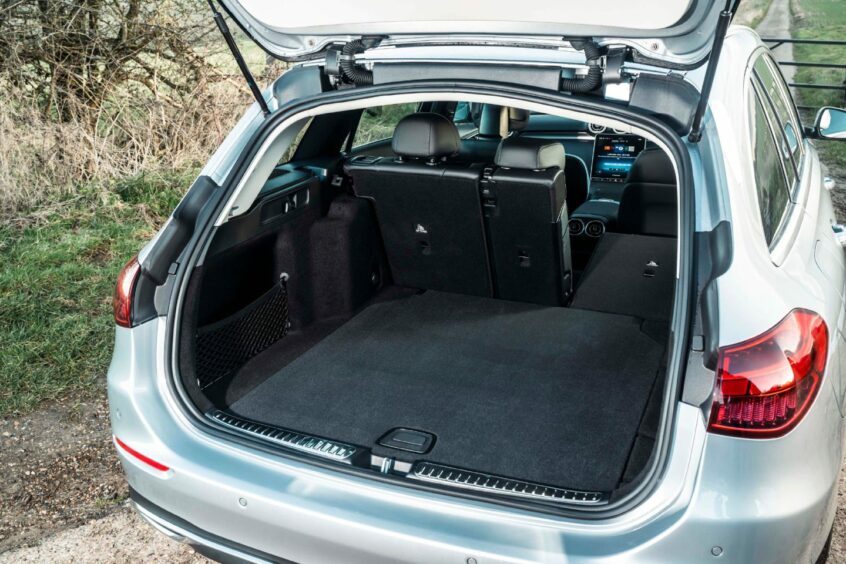
Our test car came in flat silver and with few of the exterior trinkets that people tend to want from their new premium vehicle, which did mean that it blended into the background somewhat.
It’s not a bad looking car by any stretch of the imagination, but on 17-inch silver wheels and with few vents and curves it’s not an eye-catching thing.
However, that needn’t be a bad thing. If you’re after a car that just gets the job done and doesn’t attract too much attention to itself, then this could be the one for you.
A boost from more in-car technology
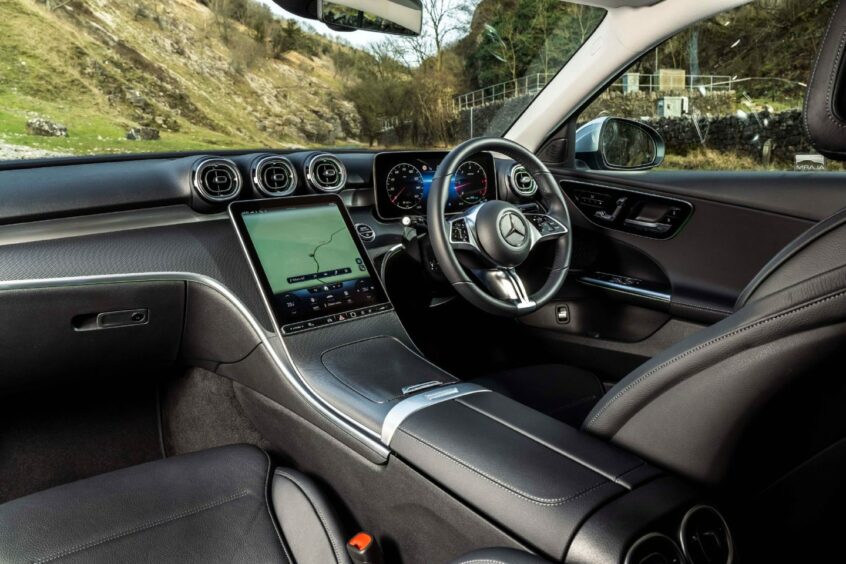
The new C-Class definitely feels a cut above the rest in terms of in-car technology – but more on that later.
There’s been a real boost in terms of space inside with the aforementioned increase in rear seat head- and knee room making the rear of the cabin into a spacious area to sit. Up front, the seats are comfortable and well padded while visibility is good, too.
But, of course, the real draw towards the Estate version is the boot space it offers. In this latest version, that’s up 30 litres on the version it replaces, with 490 litres available as standard and 1,510 litres there if you fold down the rear seats.
Hi-spec comes as standard
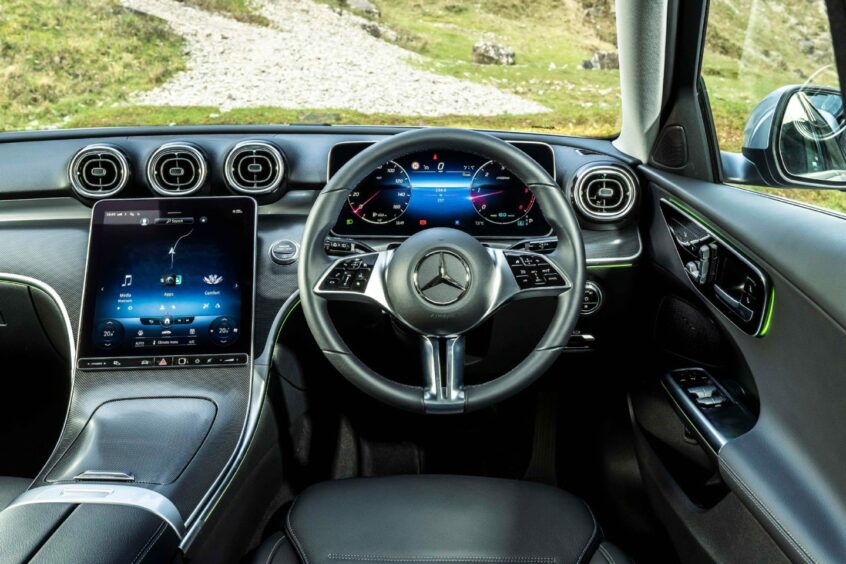
Even in our entry-level Sport specification car there’s plenty of equipment included as standard. All cars come with a 12.3-inch digital driver display and a huge 11.9-inch central display running the latest MBUX operating system.
It’s easy to use, too, but does feel at times a little too large as you can find yourself struggling to identify the right menu at times.
Other highlights on Sport-grade cars include heated seats with leather upholstery, a rear-view camera and wireless smartphone charging. Our car came in at £46,270 and, given the efficiency and standard equipment it offers, seems like good value for money,
An estate that’s right on the money
It’s hard to fault the C220d Estate. Despite diesel falling out of favour with many manufacturers it’s still a superb fit here, with the 2.0-litre turbocharged unit equipping the C-Class with a good level of punch but the kind of economy that’ll see visits to fuel stations being few and far between.
Given its extra versatility, it feels like the Estate could be the version to opt for. Certainly, if you’re after a car that won’t break the bank to run but has all the space you could want, then the C-Class Estate feels like it’s right on the money.
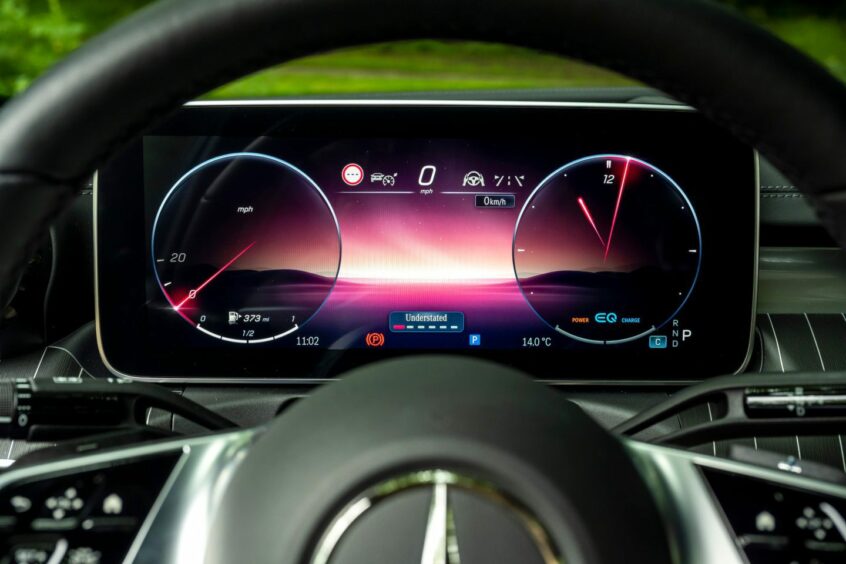
The Facts
Model: Mercedes-Benz C220d Estate
Price: £46,270
0-60mph: 7.2 seconds
Top speed: 150mph
Economy: 60.1mpg
Emissions: 129g/km
